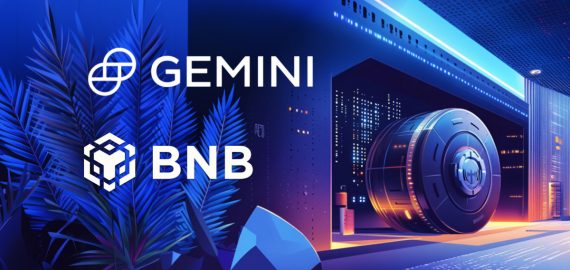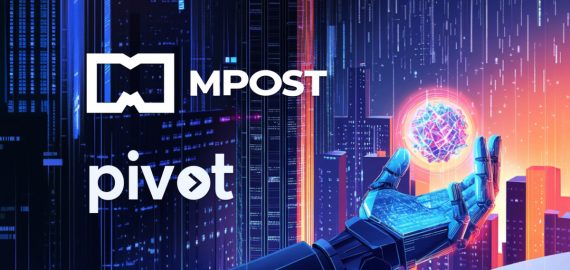How to Successfully Build Your AI Project — Argentum AI


In Brief
Clark Alexander, Chief AI Officer at Argentum, shared with Kelvin Sparks at Hack Seasons Singapore: “You can’t win a race in the first turn—but you can lose it there.” In AI projects, startups, or any complex venture, survival is the first and most important step.
At the Hack Seasons Conference in Singapore, Clark Alexander, Chief AI Officer at Argentum AI, leaned back and laughed as he recounted his adventures in the city. “Singapore is awesome,” he said. “I’ve been going to all the hawker centers, eating as much as I can. I’m afraid I’m going to go home several kilograms heavier. And Formula One’s here, so that’s pretty awesome too.”
But when the discussion turned to the title of the talk—How to Successfully Build Your AI Project—Clark immediately admitted. “I’m not here to tell you how to succeed. I’m here to tell you how not to fail.” He likened AI projects to his experiences coaching a 12-and-under soccer team in Chicago.
“There are two ways to win a game: score more goals or give up fewer goals. If you’ve been trading stocks, it’s the same. The market can stay irrational longer than you can stay solvent. Your first goal is to survive long enough to play the game.”
He illustrated this with a quote from The Art of Racing in the Rain:
“You can’t win a race in the first turn, but you can lose it there.”
In AI, he said, many projects collapse early because teams rush in without understanding the practical limitations of their ambitions. Survival is the first goal.
Physical Limits vs. Theoretical Possibilities
Clark illustrated the difference between what’s mathematically possible and what’s physically achievable with a simple analogy: Legos.
“How tall can you build a tower? Math says infinity. Physics says gravity wins eventually. There’s a math answer, and there’s a physics answer. In computing, the same thing applies. There’s a massive physical barrier to AI. Energy constraints make AGI via current LLM models impossible.”
Understanding these limits is crucial. Theoretical solutions may exist, but physical and resource constraints define what can actually be accomplished.
Avoiding Early Mistakes
Timing, sequencing, and approach matter more than raw ambition. Clark warned:
“Don’t pick your tech stack before solving the problem. You’ll end up fitting square pegs into round holes, solving someone else’s problem instead of your customer’s. Don’t be too aggressive too early. Make sure you survive the first turn so you can compete later.”
For him, survival is tied closely to diversification.
“Timing the market is really, really hard. The strategy is diversification. You have to be in the market to grab the opportunity when it pops up. You can’t grab it if you’re out of the game.”
Diversifying Problems and Resources
Clark described Argentum’s approach: leveraging idle compute to tackle a wide array of problems, from AI training to optimization in energy and drug discovery.
“We want small players who need help running an AI model and big players doing massive computations like weather predictions. Diversify your problems and your resources, and you’ll be ready to seize opportunities.”
He shared an example from the energy sector: the Alternating Current Optimal Power Flow problem (ACOPF).
“A 1% improvement in this model can be worth $1 billion a day. That’s the kind of problem we want to solve using idle compute. AI is just one application. We also want to handle molecular simulations, video graphics, and optimization problems across industries.”
Lessons from Risk and Reward
Reflecting on risk, Clark drew parallels with entrepreneurship and academia:
“Starting a company is the biggest risk. Staying in academics is a different risk. You have to find the sweet spot between risk and payoff.”
Even complex theoretical questions, such as whether a computer can solve a problem with no finite data, feed into his broader philosophy: survival, preparation, and clever problem-solving are what distinguish projects that fail from those that thrive.
“Don’t lose in the first turn. Diversify so you can grab the opportunity when it arises. Solve the problem first, then build the tools. That’s how you avoid failure—and eventually, that’s how you win.”
Disclaimer
In line with the Trust Project guidelines, please note that the information provided on this page is not intended to be and should not be interpreted as legal, tax, investment, financial, or any other form of advice. It is important to only invest what you can afford to lose and to seek independent financial advice if you have any doubts. For further information, we suggest referring to the terms and conditions as well as the help and support pages provided by the issuer or advertiser. MetaversePost is committed to accurate, unbiased reporting, but market conditions are subject to change without notice.
About The Author
Victoria is a writer on a variety of technology topics including Web3.0, AI and cryptocurrencies. Her extensive experience allows her to write insightful articles for the wider audience.
More articles

Victoria is a writer on a variety of technology topics including Web3.0, AI and cryptocurrencies. Her extensive experience allows her to write insightful articles for the wider audience.

















































